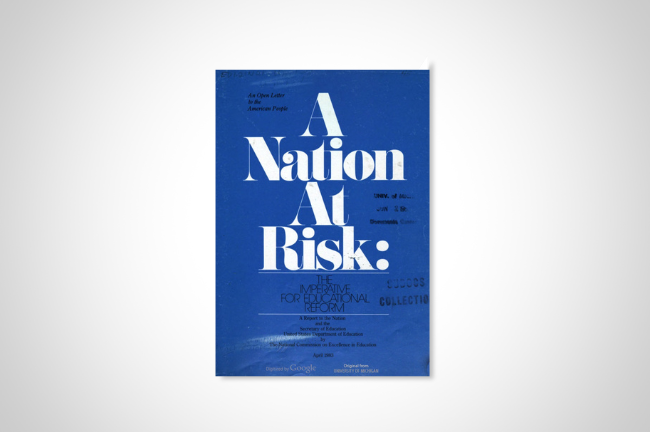You have /5 articles left.
Sign up for a free account or log in.

U.S. Department of Education, via Wikimedia Commons
The bipartisan bill on workforce Pell Grants (HR 6585), which would extend federal Pell Grants to short-term training programs, passed out of the House Committee on Education and the Workforce last month. This was not unexpected. Workforce Pell already passed the House once before, but it keeps getting waylaid in the Senate by disagreements over the eligibility of for-profit providers. And there is also the issue of how to pay for it. The new House bill includes for-profits, but only if they meet certain quality standards. And another controversial aspect would offset the cost of workforce Pell by cutting off federal student loans to the country’s wealthiest institutions.
While obstacles to passage remain, workforce Pell nonetheless will likely become law over the next few years, because it is driven by the relentless need to find a home for job training alongside the academic curricula that dominate our high schools and colleges.
HR 6585 responds to the unmet promise of gainful employment made in “A Nation at Risk,” the landmark 1983 report by the National Commission on Excellence in Education. That report triggered roughly four decades of education reform that have led to the current tension between college degrees and training.
The clarion call for education reform in “A Nation at Risk” was as much about gainful employment as it was about academic competitiveness. It announced in florid prose,
“Our nation is at risk. Our once unchallenged preeminence in commerce, industry, science, and technological innovation is being overtaken by competitors throughout the world … What is at risk is the promise first made on this continent … that all children … can hope to attain the mature and informed judgment needed to secure gainful employment.”
Forty years later, reform has moved up the education pipeline. The momentum for transparency around postgraduation employment and earnings outcomes has been building with the College Scorecard, the new gainful-employment and financial value transparency regulations, and potentially the College Transparency Act, if it passes in the near future. Workforce Pell doubles down on the gainful employment promise made in “A Nation at Risk” by adding a training dimension to an education system almost entirely focused on academic coursework and degrees.
The strong bipartisan support for workforce Pell is remarkable, in part because it is an abrupt departure from a troubled political history for workforce training policy at both the secondary and postsecondary levels.
In the secondary education arena, vocational education was run out of town on a rail beginning with “A Nation at Risk.” At the time, we moved away from high school vocational education for good reasons—as America deindustrialized, the labor market for those with only a high school diploma collapsed and high school vocational programs became increasingly ineffective. Vocational education in high schools was also dropped because of its tracking by race, class and gender, which the American public judged as unfair.
Voc-ed, as it was affectionately known, came back to town with a makeover and a new, high-tech name: career and technical education. CTE is a powerful pedagogical advance that helps students learn academic content in applied contexts in high schools. Students in CTE programs graduate from high school and enroll in college at higher rates than non-CTE concentrators. But CTE is not job training. It is not enough for gainful employment.
Workforce training policy hasn’t done much better. We spend less than a third of what many of our economic competitors in the Organisation for Economic Co-operation and Development spend as a share of the GDP on “active labor market policies.” In addition, OECD, as the international arbiter on the quality of secondary vocational education and training (VET) systems in modern economies, declared in its 2023 report that “the United States reports no enrolment in upper secondary VET, as there are no differentiated vocational programmes in high schools.”
Harry Holzer, the Georgetown University labor economist and former chief economist at the U.S. Department of Labor, has been the man with the plan for workforce training for decades. Holzer’s retrospective summary judgment on our workforce training policies is that the U.S. has been starving the federal training system since its peak with the Comprehensive Employment and Training Act in the Carter years; funding has dropped by two-thirds since then. Holzer sharpens this point by suggesting that the U.S. is caught in a trap where low funding generates low impact, which then justifies low funding, which then feeds continued low impact.
Workforce Pell is a good news, bad news story—as with most legislation, there is more to be done. The good news is that after being removed from K-12 education and ignored and underfunded in workforce policy, training found a new home as a stepping-stone between our academic curricula in high school and college.
The bad news is that workforce Pell alone comes with obvious shortcomings, especially on equity issues around access to college degrees. Expanding the number of states that offer community college bachelor’s degree programs will help. Community colleges will be key in the utilization of workforce Pell, and students are more likely to take advantage of bachelor’s degree programs if they are offered by the same community colleges where they take their training courses. Beyond that, where community college bachelor’s degrees are not available, there is the tedious business of improving transfers to four-year colleges. In the future, we will need to take an all-one-system approach to make the connection between high school academic coursework, CTE, workforce Pell and college degrees to fully realize the promise of gainful employment made by “A Nation at Risk.”








